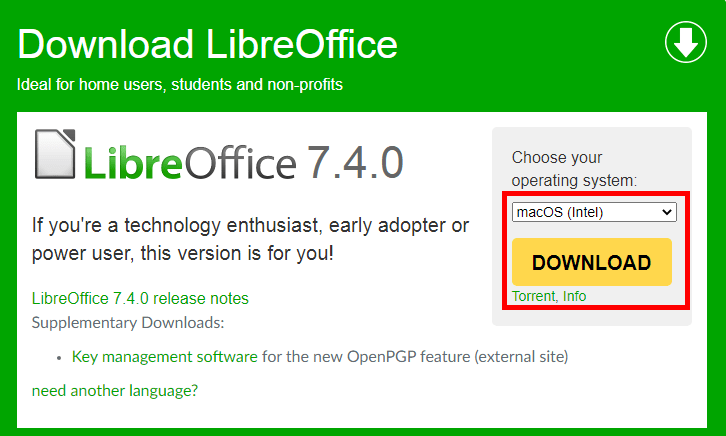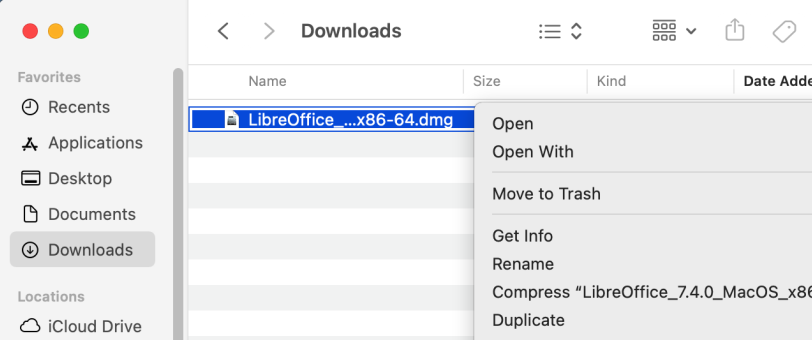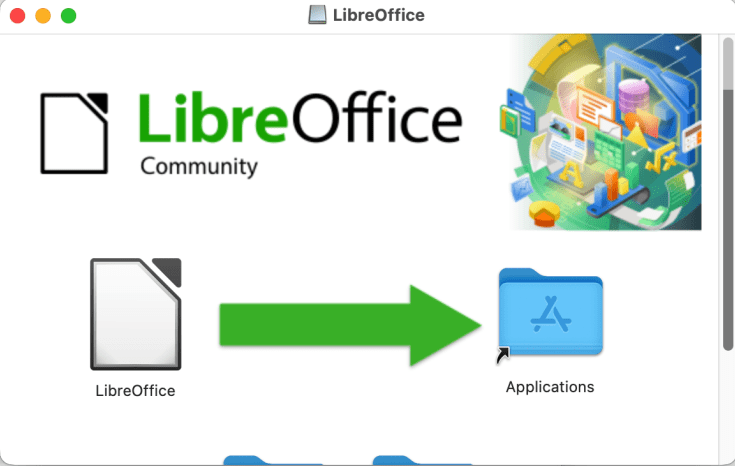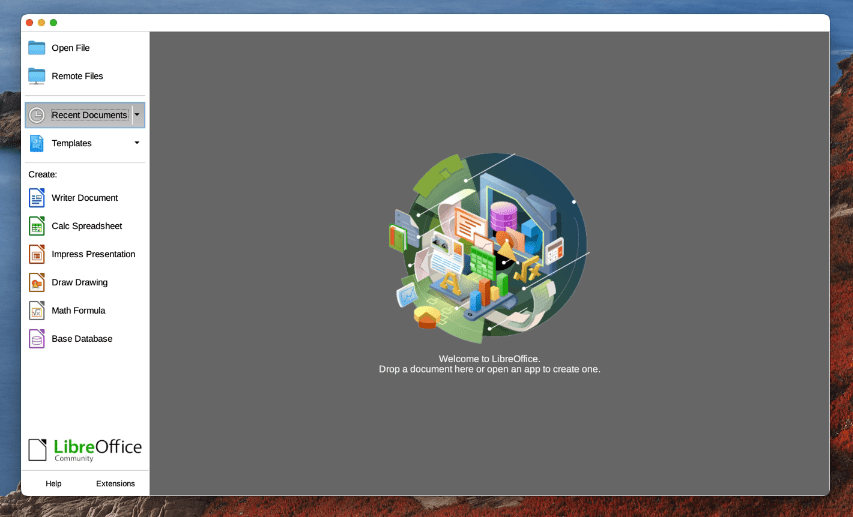System Requirements
First, make sure you have a macOS system that meets the minimum requirements for LibreOffice. You can find those here. This includes:
macOS 10.12 or newer Intel or Apple silicon processor Minimum 512 MB RAM Up to 800 MB of free disk space 1024×768 graphic device with 256 colors (or higher)
LibreOffice also has specific versions for each major macOS release. You can find the macOS versions here. You’ll want to pick the most recent one for your macOS version.
How to Install LibreOffice on macOS
If you want to install the latest version of LibreOffice, you’ll want to download the files from the LibreOffice website. Follow the below steps to download and install LibreOffice on macOS. That’s it. This will complete the LibreOffice installation on your macOS system. Now, you can launch the LibreOffice application and start using it.
Conclusion
There are many reasons why you might want to use an open-source alternative to Office. Perhaps you want to save money or maybe you have to meet a budget. You might prefer open source software for privacy or security reasons or you might just like the idea of supporting free software. Whatever your reasons, LibreOffice is an excellent alternative to Microsoft Office. It works well on Mac, Windows, and Linux. It also has a feature set that is comparable to Word. However, one thing to keep in mind is that LibreOffice is regularly updated. This can mean that features can change and improve over time. This can be both good and bad. It can mean that you get new and exciting features. However, it can also mean that features you like can be removed.




